My Wealth Managers Save Lives Too
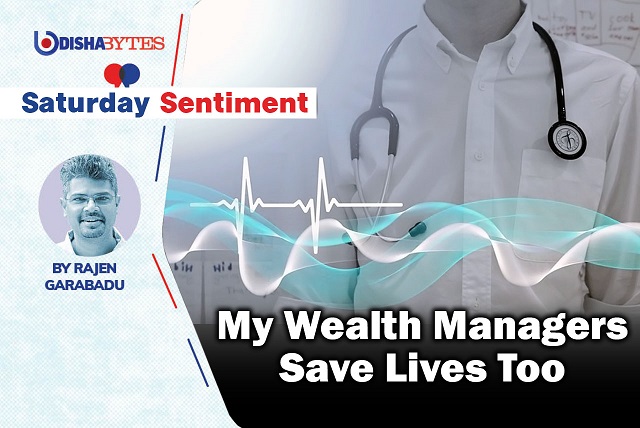
How do you choose a doctor if you don’t already have one?
I go online and check both the ratings and reviews. Two years ago, I looked up Practo for an internal medicine doctor. My wife’s grandmother was living with us, and her blood sugar levels had shot up. I found Dr Rajiva Gupta, who had almost 100 percent ratings and hundreds of patient stories. It helped that he was a diabetologist too.
A few minutes later, Dr Gupta called after I had made my selection. Our consultation lasted nearly half an hour. The conversation about grandma’s ailment didn’t take more than 10 minutes. Then we got talking. I learned that he and his doctor wife were visiting their son’s family in the US when COVID struck and locked down much of the world. They continued to stay there for almost a year before they returned to Gurgaon, where they resided and pursued their professional practice.
Dr Gupta is among the hundreds of doctors I have consulted during my time on earth. Though he is busy attending to patients, he finds time to connect. He offers medical and other advice from his long and illustrious years of experience.
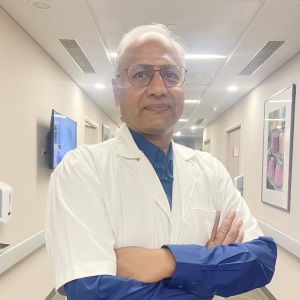
I found him to be a doctor who keenly observes our world. And the people who inhabit it. His wisdom extends much beyond medical science, and he is happy to share it. We stayed in touch.
At a time when the Delta wave wreaked havoc, it was difficult to find time with doctors. One of my colleagues, Amanjot was hospitalised, his children were COVID positive, and his wife Ravinder was trying to cope with taking care of them while trying to keep their aged parents safe and healthy. It was a torrid time. I put her in touch with Dr Gupta. He responded immediately.
A month ago, there was a medical emergency in the family. I frantically tried to reach out to my mother’s doctor, who has been treating one of her ailments for nearly a decade. He did not even respond to my texts. I usually don’t call doctors because I know how busy they are. I text them so that they can respond when they find the time. On both occasions, this doctor didn’t bother to revert, though my texts to him revealed it was an emergency.
What use is a treating doctor who is not there when you need him most? He left me with no choice but to disengage with him. For every such doctor, there is also a Dr Gupta who makes himself available despite his busy schedule and connects deeply with his patients. I don’t for a moment think he is extending any special treatment to me. I am convinced that’s just him, as he does for all his patients. He checks on me more than I check with him. What can be more reassuring than that?
In India, we use the term family doctor often. Dr Gupta is a doctor who makes you feel like he is part of your family. I know this is not what a family doctor means, but what the heck, I like to define the terms I use.
As a child, we learned that being a doctor is noble. It comes with enormous responsibilities. Much has changed since then. It is now widely known how private hospitals set targets for their doctors. Some owners/CEOs hold daily morning briefings with the senior most doctors, where how to augment revenue is the prime issue on the agenda. It is a money-making exercise by hook or crook.
But there are some shining beacons in private hospitals too. Dr A K Sahani at Indian Spinal Injury Centre (ISIC) New Delhi is one of them.
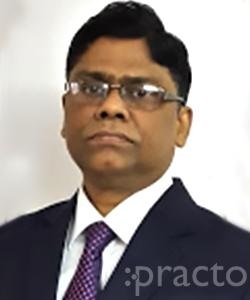
My late father was admitted there more than a decade ago. He was diagnosed with septicemia. He had been a diabetic for almost 40 years. The chances of his recovery seemed slim. To pull through, he needed a combination of strong steroids, physical and mental strength to fight back, and plenty of good wishes. The hospital pharmacy did not have the required drugs at that moment. Typically, when the necessary drugs are not available, hospitals will pass on whatever variant of the same is in their stock. But in some cases, the impact is not even comparable with what’s critically needed.
When Dr Sahani got to know the steroids were out of stock, he summoned me to his office and communicated the same. He felt it was his duty to keep the patient’s family informed. He used the analogy of the 2008 Mumbai attack to drive home the message. He said, “When terrorists launched an attack on Mumbai with sophisticated weapons, what good is a 303 rifle to fight them? Our security forces need AK-47 rifles or similar to launch a counterattack.”
Likewise, powerful steroids were the only hope clinically for my father’s body to fight back.
Dr Sahani took 40 minutes out of his busy schedule to look for the contact numbers of two suppliers outside Delhi NCR who would have the drugs. He had a large tray with compartments stacked with hundreds of business cards in his cabin, and he personally went through each one till he found the two he was looking for. I offered to look while he met patients. He declined because he felt it would be quicker if he did it. He found and called them, and the medicines arrived 3 hours later. I handed over the drugs to the nurse at the ICU. My father walked home four days later.
If it were not for the care, effort, and initiative of Dr Sahani, my father might not have come out of it.
I have the highest regard and respect for doctors in government hospitals. It is not easy doing what they do. And I know some of the finest doctors in India have remained attached to their government jobs when they could have joined the private sector and found much greater comfort and significantly higher salaries.
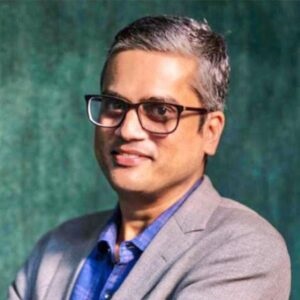
Dr P Sarat Chandra and his wife, Dr Manjari Tripathi, have been serving patients in the All India Institute of Medical Sciences (AIIMS), New Delhi, for over two decades. They have chosen their calling not just to save lives but have constantly pursued to advance and break new ground in medical science. They are invested as much in research as they are in treating patients. Their commitment to their cause is absolute and unwavering.

We are quick to criticise government hospitals and how uncomfortable they are but had it not been for them, lakhs of poor patients have no hope for top class medical care. Institutions like AIIMS are the best bet for such patients. They don’t just provide access to the finest doctors but also free medical treatment.
Doctors in the government system have a key edge over others: they see at least five times the number of patients than physicians in the private sector – offering them invaluable experience. A dear friend who’s no more was diagnosed with a giant brain tumour that needed to be removed. Dr Sarat Chandra performed that surgery over 10 years ago. It was an easy decision to make. The logic is the same: the operation needed a surgeon who does several such surgeries in a month, if not a week. He recovered almost completely in a couple of months, thanks to Dr Chandra’s skill and experience.
I have mentioned only a few doctors here who I have benefited from. I consider them as my family’s wealth managers. Because health is the biggest wealth you can own. If you are blessed with good health, the sky is the limit to what you can achieve. As we know, money can’t guarantee good health.
There are many doctors and health sector professionals who make the world a better place. They go beyond their call of duty wherever needed. And continue to inspire hope in a world where rampant commercialisation has brought disrepute to the medical profession.
Such doctors can be found not just in big cities but small towns too.
Take, for instance, Dr Shankare Gowda, a skin specialist from Mandya in Karnataka. For almost four decades, he has been charging his patients just five rupees for consultation. Yes, you read it right. What can five bucks get you in the present times? Nothing, except Dr Gowda’s attention and treatment – invaluable for his patients. He prescribes affordable medicines only. He has been treating all types of skin diseases with an almost 100 percent success rate.
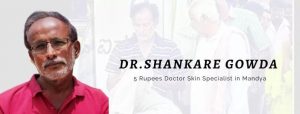
What the Health Sector Needs Most
Education of training personnel, skill development and ongoing research are all the essential and important components for health care. All of them constitute the complete ecosystem. It’s important that investment into health care system not only take the above factors into consideration but also protect the doctors from the market forces so that the highest level of ethics, compassion, and evidence-based treatment can be expected.
It takes around 10 years to train a doctor. By the time a doctor starts practicing, most of the other professions have reached their mid-career point. Several doctors marry late, as by the time they finish their post-graduation they are well into their 30s. It takes many years for the doctor to master all the necessary skills.
Investing in health care system is like planting a tree. A lot of attention, love and care has to be given till the tree grows big, provides shade and yields fruits. It’s important that we also look critically at the systems in which the doctors work and the policymakers who create the health policies. All the three along with doctors are equal stakeholders in this process.
What You Can Do
You, my readers, will have your own list of wealth managers too. It could be a single doctor, just a couple or more. Thank them. Celebrate them. Tell them how much they mean – not just to you – but to the community at large.
Having done that, thank God too!
(Rajen Garabadu is Chief Executive Producer, News18 Network. This piece was first published on LinkedIn and has been reproduced here with his consent. The views expressed in this article are those of the author and don’t necessarily reflect the opinion of the website)

Comments are closed.